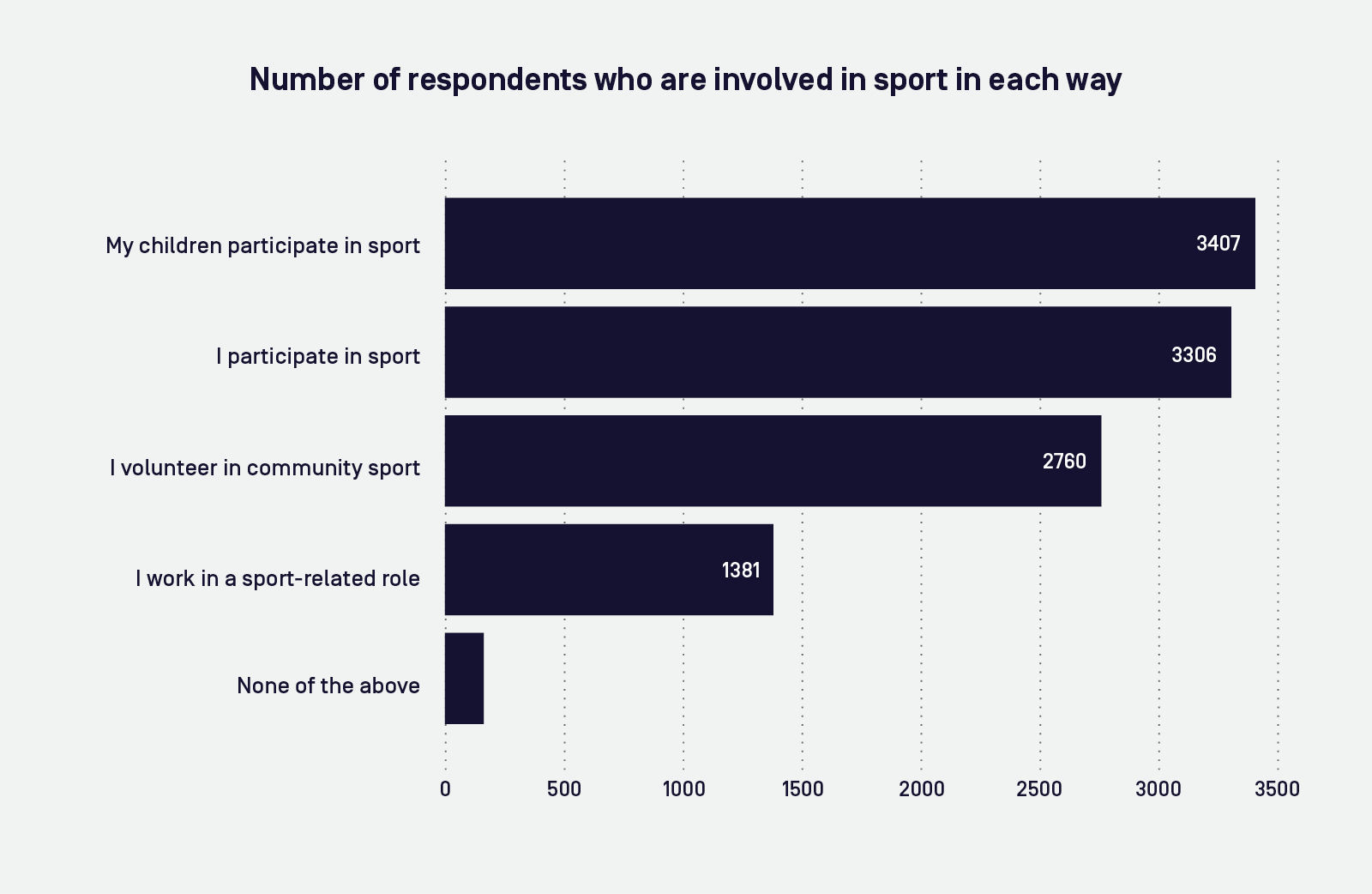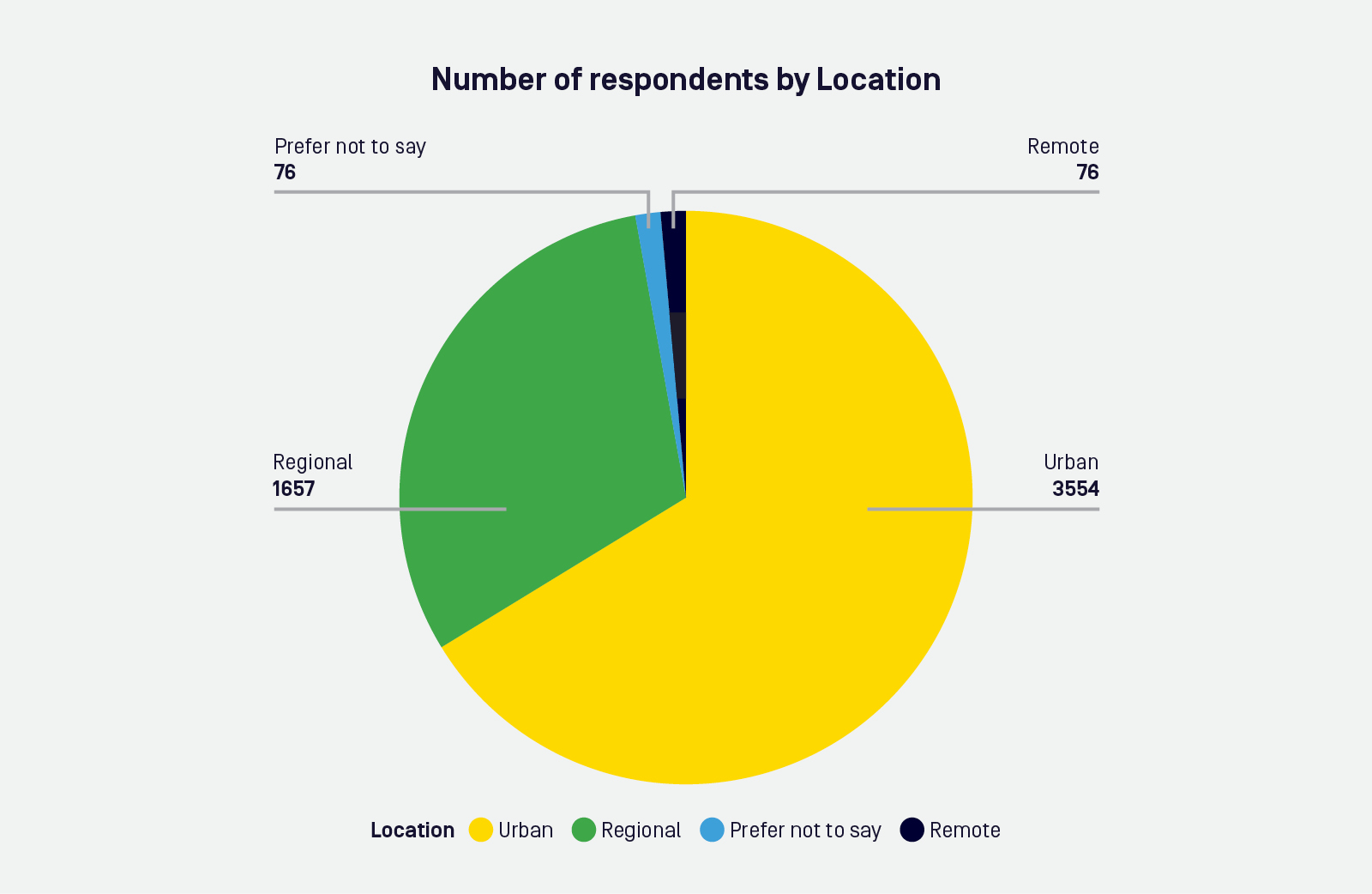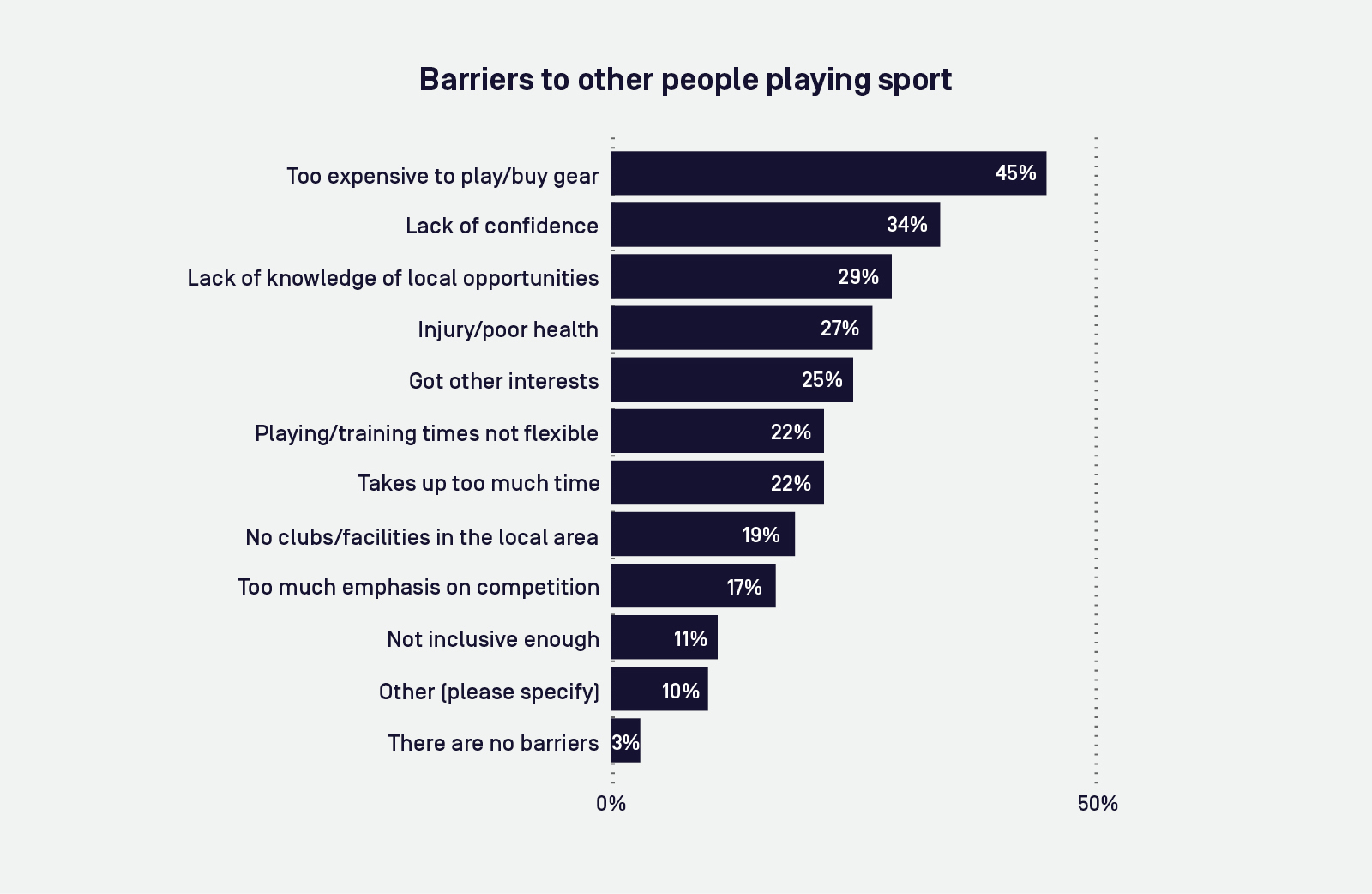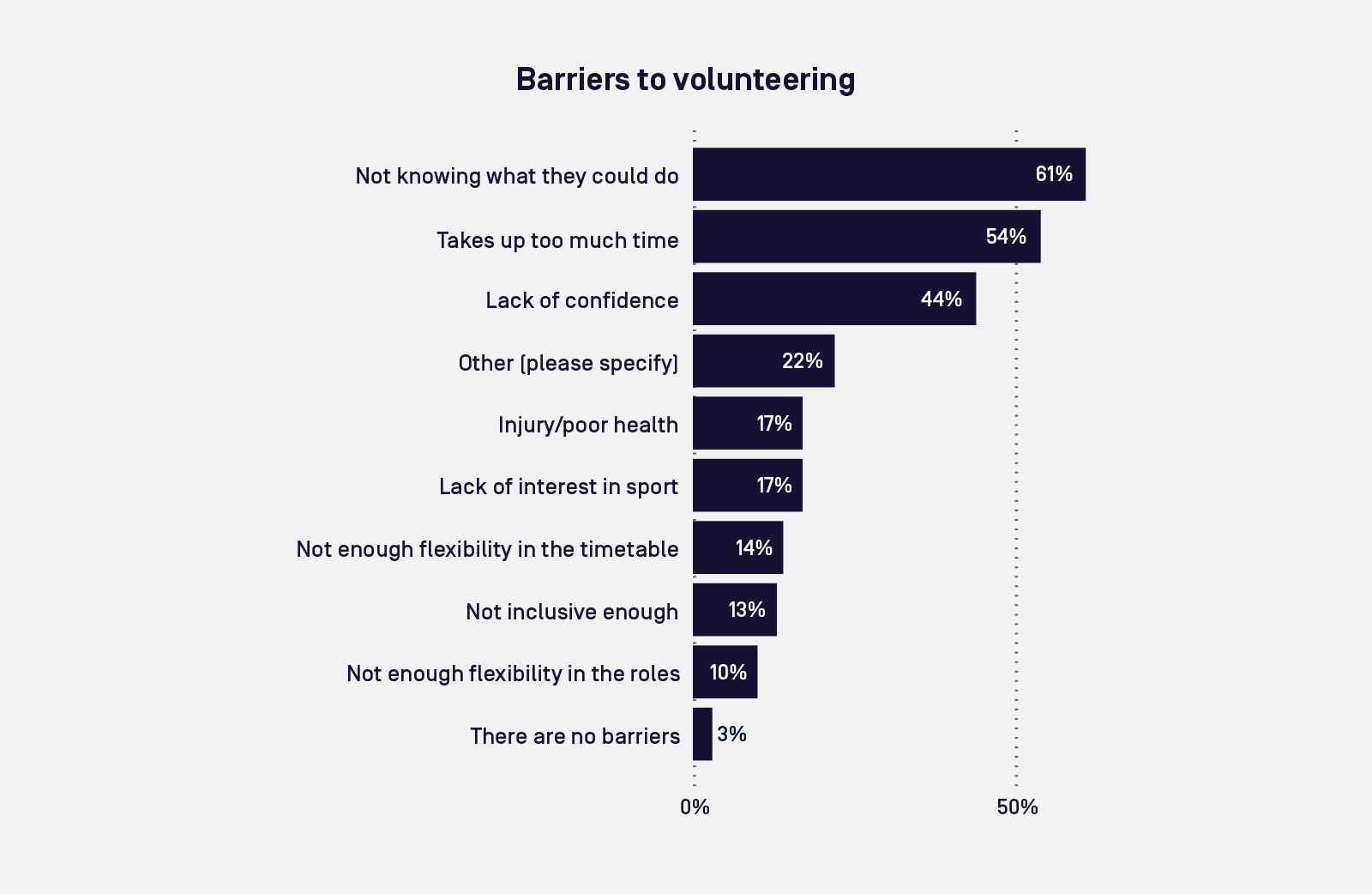
Thank you, Australia, for sharing your insights as we work together to develop the nation’s first codesigned National Sport Participation Strategy.
Our National Sport Participation Strategy survey was a huge hit with more than 6,600 Australians providing valuable insights into the sporting landscape. The figures below provide a breakdown of some of the survey respondent demographics and most commonly identified motivators and barriers to participating in sport.
Where particular groups or communities are not sufficiently represented in the survey responses there is opportunity for further consultation.





More than half of those who completed the survey have children who participate in sport. More than 3,300 Australians also participate in sport themselves.
More females than males completed the survey. 16 respondents identified as non-binary, while 133 respondents identified as something else or preferred not to answer.
Out of the 6,600 survey responses, more than half were from urban areas.
Respondents highlighted a number of barriers to participating sport with cost seen as the biggest barrier followed by lack of confidence and knowledge of local opportunities.
When it comes to volunteering in sport you told us that the biggest barrier was not knowing how you could contribute, and that volunteering takes up too much time.





In partnership with sector stakeholders, the ASC is facilitating the development of Australia's first codesigned National Sport Participation Strategy.
The objectives of the Strategy will be to:
Working under the guidance of a Project Steering Group the ASC will create a formal project governance structure, which reflects the diversity of the sport system and maximises the number of Australians contributing to insights, ideas and project outcomes.
We’ve been busy behind the scenes working through these responses and experts have spent the past few weeks shaping content, activities and measures for the strategy.
A co-design workshop in Sydney is up next and we will provide another update following this important milestone.
Sport is great, and great things are coming we cannot wait to share more soon.
We were thrilled to welcome the National Sport Participation Strategy Project Steering Group to the AIS. Hear why they’re passionate about transforming the way participation is connected, delivered and supported in Australia.
The Australian Sports Commission (ASC) acknowledges the Traditional Custodians of the lands where its offices are located, the Ngunnawal people and recognises any other people or families with connection to the lands of the ACT and region, the Wurundjeri Woi-wurrung people of the Kulin Nation, the people of the Yugambeh Nation and the Gadigal people of the Eora Nation. The ASC extends this acknowledgment to all the Traditional Custodians of the lands and First Nations peoples throughout Australia and would like to pay respects to all Elders past and present. The ASC recognises the outstanding contribution that Aboriginal and Torres Strait Islander peoples make to society and sport in Australia and celebrates the power of sport to promote reconciliation and reduce inequality.